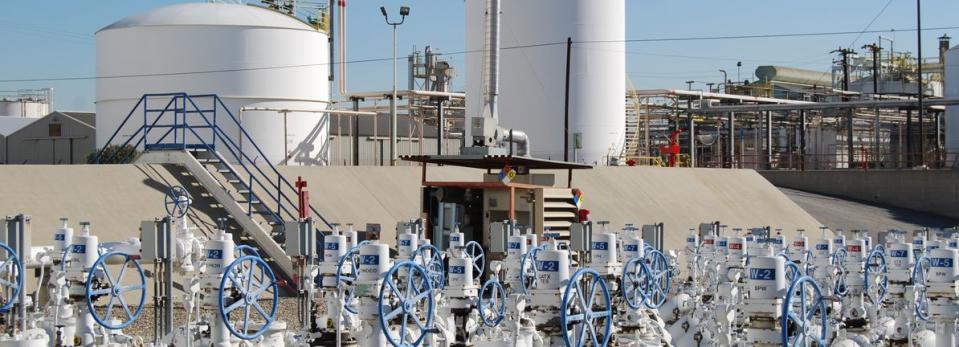Kinder Morgan, Inc. (NYSE:KMI) Might Not Be A Great Investment

Today we'll evaluate Kinder Morgan, Inc. (NYSE:KMI) to determine whether it could have potential as an investment idea. Specifically, we're going to calculate its Return On Capital Employed (ROCE), in the hopes of getting some insight into the business.
First up, we'll look at what ROCE is and how we calculate it. Then we'll compare its ROCE to similar companies. Then we'll determine how its current liabilities are affecting its ROCE.
What is Return On Capital Employed (ROCE)?
ROCE is a measure of a company's yearly pre-tax profit (its return), relative to the capital employed in the business. All else being equal, a better business will have a higher ROCE. Overall, it is a valuable metric that has its flaws. Renowned investment researcher Michael Mauboussin has suggested that a high ROCE can indicate that 'one dollar invested in the company generates value of more than one dollar'.
How Do You Calculate Return On Capital Employed?
Analysts use this formula to calculate return on capital employed:
Return on Capital Employed = Earnings Before Interest and Tax (EBIT) ÷ (Total Assets - Current Liabilities)
Or for Kinder Morgan:
0.057 = US$3.9b ÷ (US$74b - US$5.6b) (Based on the trailing twelve months to March 2020.)
Therefore, Kinder Morgan has an ROCE of 5.7%.
Check out our latest analysis for Kinder Morgan
Does Kinder Morgan Have A Good ROCE?
When making comparisons between similar businesses, investors may find ROCE useful. We can see Kinder Morgan's ROCE is meaningfully below the Oil and Gas industry average of 7.6%. This performance could be negative if sustained, as it suggests the business may underperform its industry. Aside from the industry comparison, Kinder Morgan's ROCE is mediocre in absolute terms, considering the risk of investing in stocks versus the safety of a bank account. Readers may find more attractive investment prospects elsewhere.
You can see in the image below how Kinder Morgan's ROCE compares to its industry. Click to see more on past growth.
Remember that this metric is backwards looking - it shows what has happened in the past, and does not accurately predict the future. ROCE can be misleading for companies in cyclical industries, with returns looking impressive during the boom times, but very weak during the busts. This is because ROCE only looks at one year, instead of considering returns across a whole cycle. We note Kinder Morgan could be considered a cyclical business. Since the future is so important for investors, you should check out our free report on analyst forecasts for Kinder Morgan.
How Kinder Morgan's Current Liabilities Impact Its ROCE
Liabilities, such as supplier bills and bank overdrafts, are referred to as current liabilities if they need to be paid within 12 months. The ROCE equation subtracts current liabilities from capital employed, so a company with a lot of current liabilities appears to have less capital employed, and a higher ROCE than otherwise. To counter this, investors can check if a company has high current liabilities relative to total assets.
Kinder Morgan has current liabilities of US$5.6b and total assets of US$74b. As a result, its current liabilities are equal to approximately 7.6% of its total assets. Kinder Morgan has a low level of current liabilities, which have a minimal impact on its uninspiring ROCE.
The Bottom Line On Kinder Morgan's ROCE
Based on this information, Kinder Morgan appears to be a mediocre business. Of course, you might also be able to find a better stock than Kinder Morgan. So you may wish to see this free collection of other companies that have grown earnings strongly.
There are plenty of other companies that have insiders buying up shares. You probably do not want to miss this free list of growing companies that insiders are buying.
If you spot an error that warrants correction, please contact the editor at editorial-team@simplywallst.com. This article by Simply Wall St is general in nature. It does not constitute a recommendation to buy or sell any stock, and does not take account of your objectives, or your financial situation. Simply Wall St has no position in the stocks mentioned.
We aim to bring you long-term focused research analysis driven by fundamental data. Note that our analysis may not factor in the latest price-sensitive company announcements or qualitative material. Thank you for reading.

